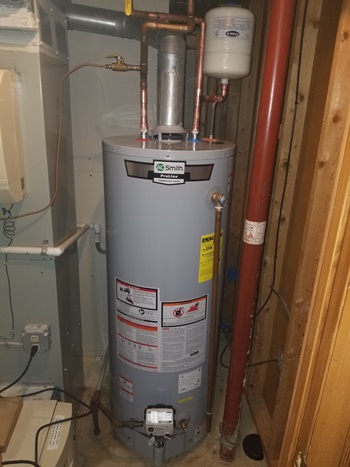What're your ideas with regards to How to Maintain a Hot Water Heater in a Few Simple Steps?

Warm water is necessary for everyday comfort, whether it's for a revitalizing shower or washing recipes. To ensure your hot water system runs successfully and lasts longer, regular upkeep is essential. This article supplies useful tips and understandings on how to keep your home's hot water system to avoid interruptions and costly repair work.
Intro
Preserving your home's warm water system may seem overwhelming, however with a couple of basic actions, you can ensure it runs smoothly for several years to come. This overview covers whatever from recognizing your hot water system to do it yourself upkeep ideas and knowing when to employ professional assistance.
Importance of Preserving Your Warm Water System
Regular upkeep not only prolongs the life expectancy of your warm water system however also ensures it runs successfully. Overlooking upkeep can lead to reduced performance, higher power costs, and even early failure of the system.
Signs Your Hot Water System Demands Maintenance
Knowing when your warm water system needs focus can prevent major concerns. Look out for indications such as irregular water temperature level, strange noises from the heating system, or rusty water.
Flushing the Water Heater
Purging your hot water heater removes sediment accumulation, boosting efficiency and extending its life.
Monitoring and Changing Anode Rods
Anode rods avoid rust inside the container. Inspecting and changing them when worn is crucial.
Complex Problems Calling For Specialist Help
Examples include major leakages, electric troubles, or if your water heater is consistently underperforming.
Routine Expert Upkeep Conveniences
Professional maintenance can include extensive assessments, tune-ups, and making sure conformity with safety and security criteria.
Inspecting and Adjusting Temperature Settings
Adjusting the temperature settings guarantees ideal performance and security.
DIY Tips for Maintenance
You can execute a number of upkeep tasks yourself to keep your hot water system in top condition.
Checking for Leaks
Frequently examine pipes and connections for leaks, as these can lead to water damage and higher costs.
Recognizing Your Warm Water System
Before diving into upkeep jobs, it's handy to recognize the standard elements of your hot water system. Usually, this includes the water heater itself, pipes, anode poles, and temperature level controls.
Regular Monthly Maintenance Tasks
Regular monthly checks can help capture small problems before they escalate.
Testing Stress Alleviation Valves
Evaluating the pressure relief valve guarantees it works properly and avoids too much pressure build-up.
Shielding Pipes
Insulating warm water pipelines decreases heat loss and can conserve power.
When to Call an Expert
While DIY maintenance is helpful, some problems require specialist competence.
Final thought
Normal upkeep of your home's hot water system is important for efficiency, long life, and expense financial savings. By following these tips and knowing when to look for professional aid, you can make sure a trusted supply of warm water without unanticipated disturbances.
How to Maintain an Instant Hot Water Heater
Before tinkering with your hot water heater, make sure that it’s not powered on. You also have to turn off the main circuit breaker and shut off the main gas line to prevent accidents. Also turn off the water valves connected to your unit to prevent water from flowing into and out of the appliance. 2. When you’re done, you have to detach the purge valves’ caps. These look like the letter “T” and are situated on either side of the water valves. Doing so will release any pressure that has accumulated inside the valves while at the same time avoid hot water from shooting out and burning your skin. 3. When the purge valves’ caps are removed, you have to connect your hosing lines to the valves. Your unit should have come with three hoses but if it didn’t, you can purchase these things from any hardware or home repair shops. You can also get them from retail stores that sell water heating systems. Read the user’s manual and follow it to complete this task properly. When the hosing lines are connected, open the purge port’s valves. 4. You should never use harsh chemical cleaners or solutions when cleaning your unit. Make use of white vinegar instead. It should be undiluted and you’ll probably use about 2 gallons. 5. Now flush your water heater. This task should probably take about 40 minutes. We can’t give you specific directions for this because the procedure is carried out depending on the type, model and brand of your heater. With that being said, refer to the user’s manual. 6. When you’re done draining the unit, you have to turn off the purge port valves again. Remove the hosing lines that you earlier installed on each of the water valves. Put the valve caps (purge port) back in their respective places and be very careful so as not to damage the rubber discs that are found inside these caps. 7. Now that everything’s back in place, check your user’s manual again to find out how to reactivate your water heating system. 8. Once it is working, turn one of your hot water faucets on just to let air pass through the heater’s water supply pipes. Leave the tap on until water flows smoothly out of it. https://www.orrplumbing.com/blog/2014/september/how-to-maintain-an-instant-hot-water-heater/

We had been made aware of that write-up on What Kind of Maintenance Do Water Heaters Need? through a buddy on another website. Do you know another individual who is sincerely interested in the niche? Why not share it. Thanks so much for going through it.
Call Today